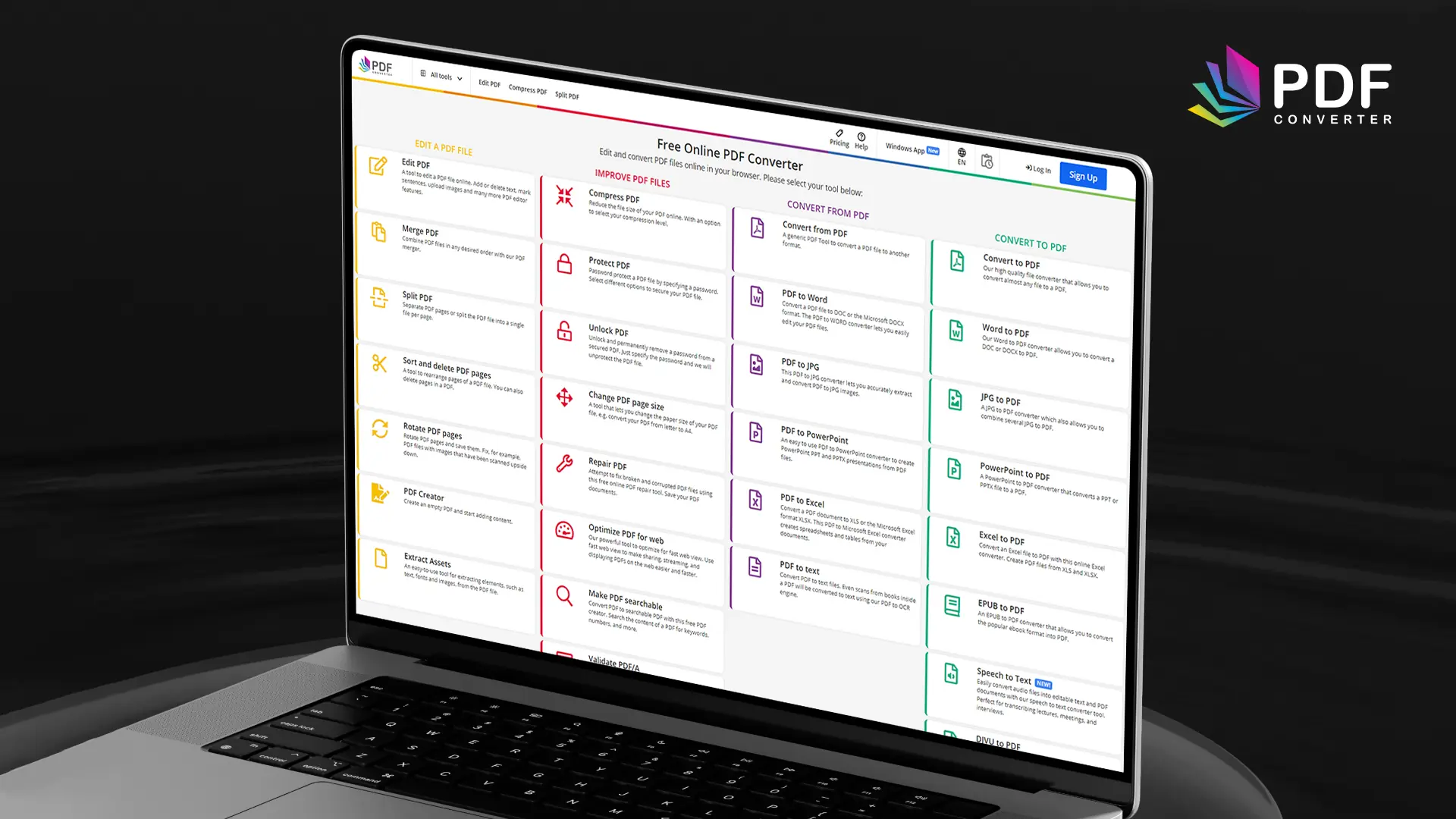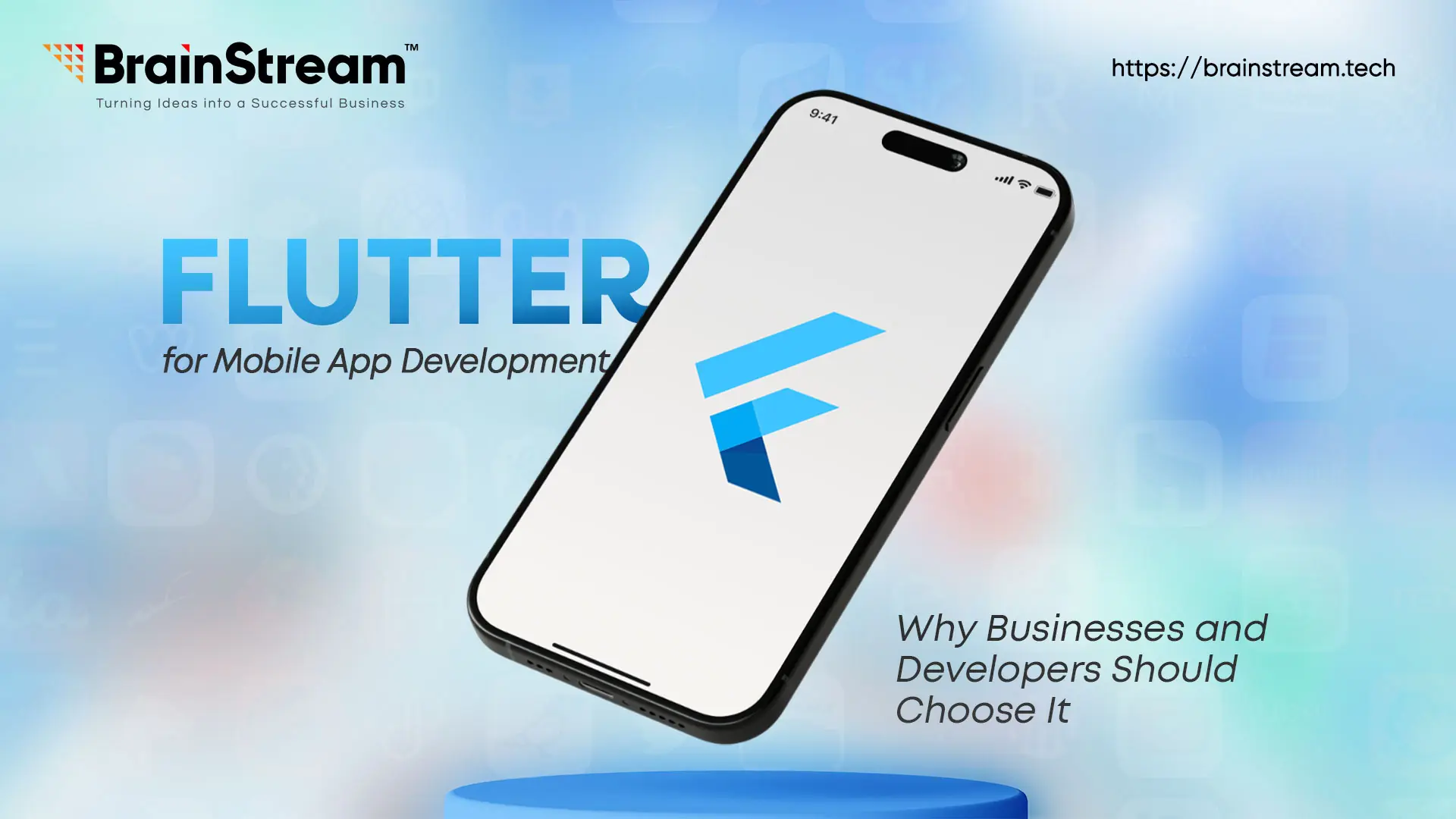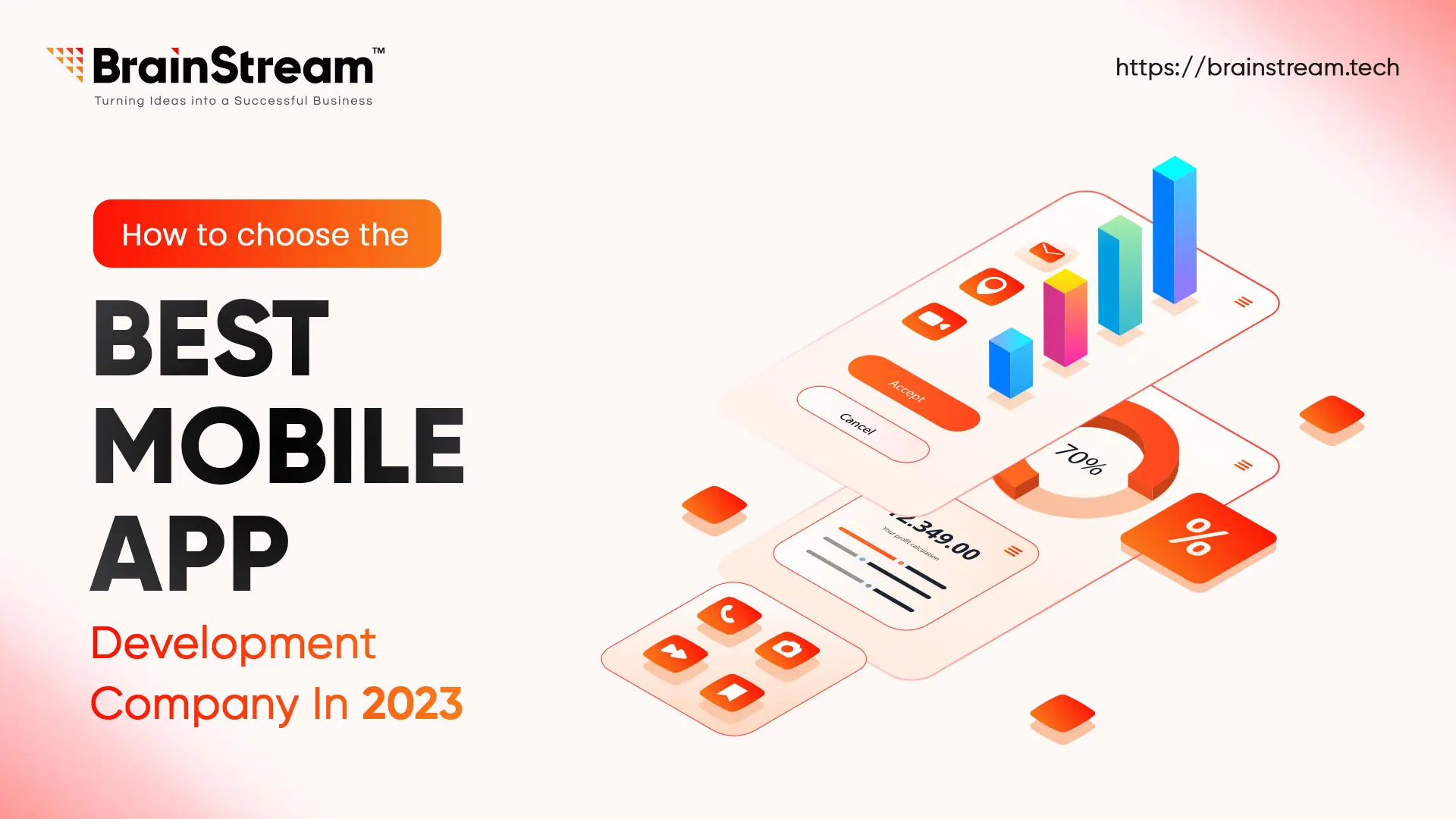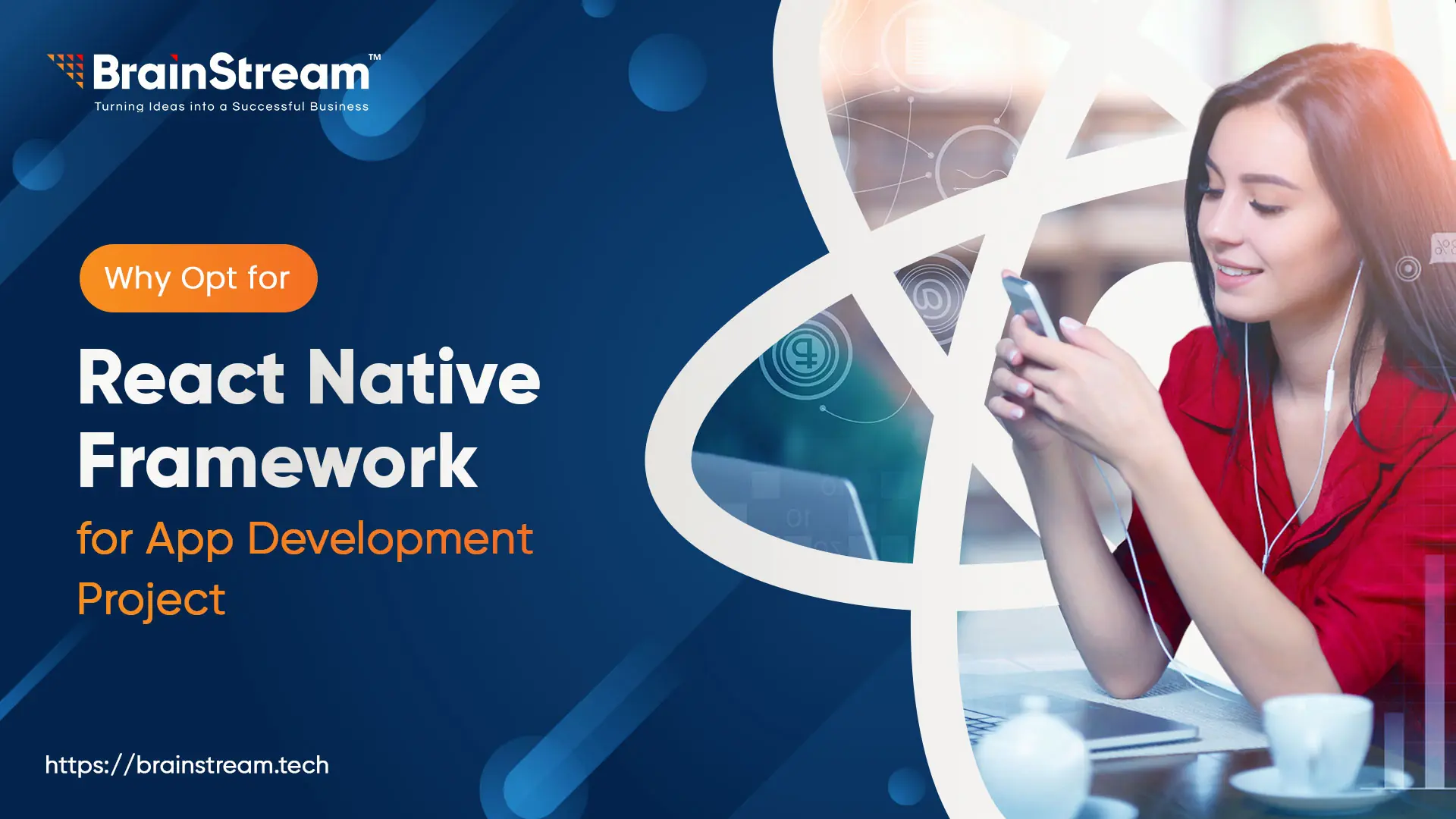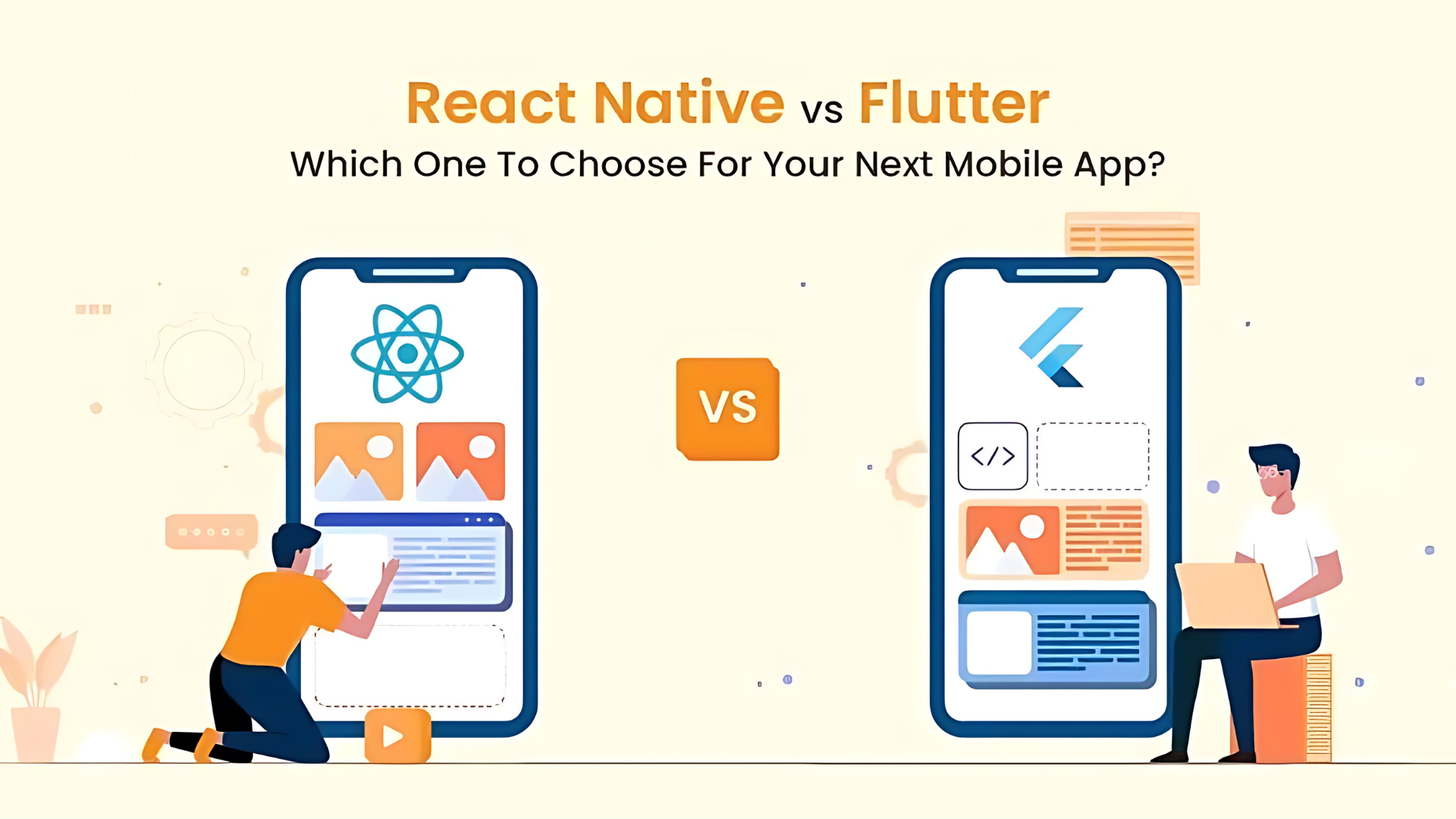
Summary:
Mobile application development continues to grow in popularity, companies are seeking ways to develop cross-platform applications which can be utilized across a range of devices.
March 2, 2023
In these article, we’ll examine two popular frameworks that allow cross-platform development: Flutter and React Native.
What is Flutter?
Flutter is an open-source mobile app development framework developed by Google. It was first released in the year 2017 , and since then has grown in a lot of attention in the world of developers due to its rapid development speed, its expressive and customizable UI, as well as its capability to build powerful mobile applications to the iOS as well as Android platforms using one code base.
Flutter utilises the Dart programming language and offers an array of pre-built widgets and other tools which allow developers to design appealing and user-friendly interfaces. The framework also comes with the hot-reload feature that lets developers see modifications that they’ve made in their program immediately without restarting the application which makes the process of developing quicker and efficient.
Furthermore, Flutter has a strong and growing community of users that provide an extensive set of documentation, tutorials and plug-ins, making it much easier for developers to understand and utilize the framework. Flutter is a great tool to create a variety of applications, from basic prototypes to sophisticated enterprise-level apps.
What is React Native?
React Native is an open source mobile app development framework developed by Facebook. First came out in 2015 and has since become an extremely well-known framework for creating native mobile applications development that run on iOS as well as Android platforms with the same codebase.
React Native makes use of the React framework that is widely used in web development. It allow the developers to create mobile applications using JavaScript as well as React syntax. React Native offers a set of pre-built elements that allow developers to build sophisticated user interfaces quickly and effectively.
One of the major advantages that comes with React Native is its capability to make use of a single source code base to build mobile applications that work on various platforms. Developers write one codebase and publish simultaneously on iOS or Android platforms, saving time, and development costs.
React Native also offers hot-reloading which allows developers to view the modifications that they’ve made in their application in real-time without having to rebuild the application. This allows developers to develop easier and faster.
In the end, React Native is a powerful tool to develop native mobile applications that provide the same functionality and user experience that apps created using native frameworks for development, such as Java or Objective-C/Swift.
The History of Flutter and React Native
The Flutter framework and React Native Two well-known frameworks for mobile app development which have gained popularity in recent times. This is a brief overview of the two frameworks:
Flutter:
- Flutter was announced for the first time in the early days of Google at the end of May 2017, during the Google I/O conference.
- First stable Flutter version Version 1.0 was released in December of 2018.
- Since its introduction Flutter has grown in popularity with developers. Flutter has also been utilized to create apps for companies like Alibaba, Google, and Tencent.
React Native:
- React Native was initially launched by Facebook in the year 2015, and was an expansion of the React Web Development Framework.
- Since its introduction, React Native has become one of the most used frameworks for mobile app development, employed by companies like Facebook, Airbnb, and Instagram.
- React Native has undergone several major updates, the most recent being version 0.70.6.
Both frameworks are gaining popularity with a large number of developers, and they continue to develop to meet the ever-changing requirements of mobile application development. Although Flutter as well as React Native have some similarities in their capability to create mobile apps that are high-performance with a single source code base, they have some significant differences in the way they use their languages of programming, their architecture and available features.
Why are React Native and Flutter so popular?
React Native as well as Flutter are popular mobile frameworks for developing apps:
- Development for Cross-Platforms: The both frameworks let developers to create applications that work on each of the iOS as well as Android platforms from one codebase. This drastically reduces development time and costs, since developers do not have to write code on each device.
- Hot Reloading: Both Flutter along with React Native offer hot reloading which lets developers observe changes to their code in real time without having to build the app again. This makes development quicker as well as more effective.
- Rich set of pre-built components: Both frameworks offer a rich set of pre-built components and widgets, which makes it easy for developers to create complex user interfaces quickly and efficiently.
- Strong community support: Both frameworks have a robust and expanding community of programmers who work on the frameworks, offer assistance and advice, and also offer their expertise and knowledge.
- Performance:Flutter along with React Native are designed to offer high-performance applications that feature speedy loading time, fluid animations with a natural look and feel.
- Easy to learn: It is easy to master Frameworks that are well-known programming languages (Dart to create Flutter along with JavaScript in React Native), which makes it simple for developers to understand and use the frameworks.
Flutter vs React Native: Comparison
Programming Language
Flutter: Flutter uses the Dart programming language. Dart is a modern, object-oriented programming language designed to optimize for UI development.
React Native: React Native uses JavaScript. JavaScript has a larger developer community and a longer history, which makes it easier to find resources and support.
Architecture
Flutter: Flutter is based on a widget-based architecture, which means that the UI components in Flutter are themselves widgets that can be easily modified and reused.
React Native: React Native is, however, built upon an architecture based on components, in which components are developed with JavaScript code.
Community Support
Flutter: Flutter’s community is growing rapidly and has strong backing from Google.
React Native: It has a bigger community due to its long-standing time in existence.
Development Time
Flutter: Flutter’s hot reload feature and well-documented widget-based architecture can significantly reduce development time. The hot reload feature allows developers to see the changes they make to the code immediately, making it easier to iterate and experiment with different UI designs. Additionally, Flutter has a large collection of pre-built widgets that can be easily customized and used to build complex UIs quickly.
React Native: React Native’s component-based architecture and a vast collection of pre-built components can help reduce development time. Components can be easily reused and combined to create complex UIs, and the React Native ecosystem offers a wide variety of third-party libraries and tools that can help speed up development. Additionally, React Native’s live reload feature allows developers to see changes to the code immediately, making it easier to iterate and experiment with UI designs.
Installation
Flutter:
1. Download the Flutter SDK from the official website.
2. Extract the downloaded file and add the Flutter SDK path to your system’s PATH environment variable.
3. Install any required dependencies for your development environment, such as Android Studio or Xcode.React Native:
1. Install Node.js and npm (Node Package Manager) on your system.
2. Install the React Native CLI using npm by running the command: npm install -g react-native-cli.
3. Install any required for your development environment, such as Xcode or Android Studio.Code Reusability
Flutter: Flutter provides a large number of pre-built widgets and libraries that can be easily customized and reused across multiple platforms. The Flutter framework allows for up to 95% code sharing between iOS & Android platforms, which can significantly reduce the time and effort required to develop & maintain applications.
React Native: React Native uses a component-based architecture, where UI elements are created using JavaScript code. These components can be easily reused and combined to create complex UIs. Additionally, React Native provides a large collection of pre-built components that can be used to build applications quickly and efficiently.
Documentation
Flutter: It has a comprehensive documentation website that covers all aspects of the framework, including installation, widgets, animations, layout, state management, and more.
React Native: It also has extensive documentation, covering topics such as getting started, components, APIs, navigation, and more.
React Native vs Flutter – What should to choose for your next project in 2023?
Making a decision among Flutter as well as React Native in 2023 will depend on a variety of aspects. The requirements of the project along with development experience and individual preferences. Flutter has a more contemporary programming interface, superior performance, and an expanding community.
React Native, on the other hand, has more users and greater flexibility because of its implementation of JavaScript.
Conclusion
Brainstream Technolabs is a leading React Native App Development and Flutter App Development services provider company in India. Brainstream is considered to be one of the top companies that offer services related to developing mobile applications using the React Native and Flutter frameworks. It has a strong reputation for delivering high-quality, reliable, and cost-effective solutions for its clients, and built a track record of success in this field.
Related Blog
Mobile App
Why Flutter is the Future of Mobile App Development for Businesses and Developers
Flutter has rapidly emerged as a game-changer in mobile app development. Backed by Google and an enthusiastic community, Flutter enables businesses and developers to build high-quality iOS and Android apps faster and cost-effectively than traditional approaches. In this blog post,...
Mobile App
How to Choose the Best Mobile App Development Company in 2023
With more tech-savvy users worldwide than ever, mobile application development has disrupted all major industries to provide business-friendliness, great ease of use, and equitable customer data access. As the demand for mobile app development is increasing, many mobile app development...
Mobile App
Why Opt For React Native Framework for App Development Project?
As per the reports of Statista, nearly 42% of mobile application developers prefer React Native over other frameworks for cross-platform mobile apps. The reasons why React Native is so popular among developers for building mobile apps are its fast performance,...

Keep up-to-date with our newsletter.
Sign up for our newsletter to receive weekly updates and news directly to your inbox.


